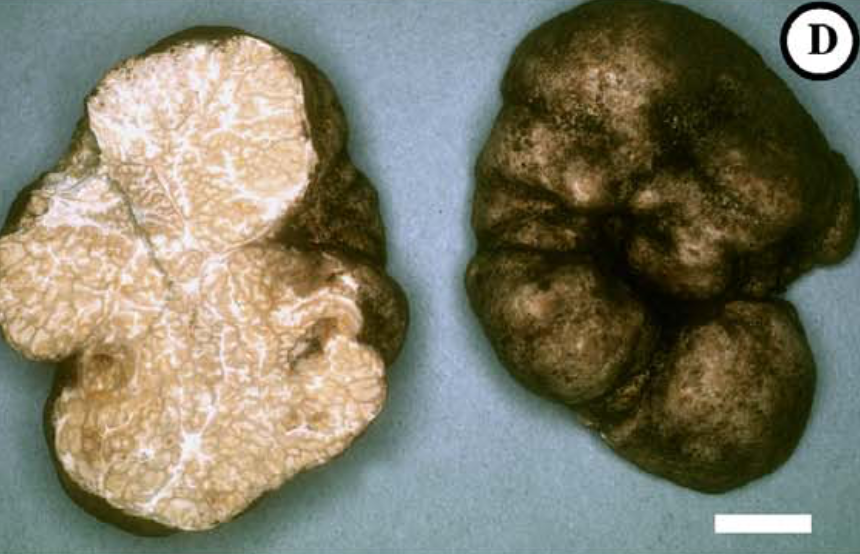Choiromyces
Nombre científico: Choiromyces
Choiromyces
Nombre científico: Choiromyces
 Photo By Stajich, Jason E.; Bonito, Gregory; Smith, Matthew E.; Nowak, Michael; Healy, Rosanne A.; Guevara, Gonzalo; Cázares, Efren; Kinoshita, Akihiko; Nouhra, Eduardo R.; Domínguez, Laura S.; Tedersoo, Leho; Murat, Claude; Wang, Yun; Moreno, Baldomero Arroyo; Pfister, Donald H.; Nara, Kazuhide; Zambonelli, Alessandra; Trappe, James M.; Vilgalys, Rytas. , used under CC-BY-2.5 /Cropped and compressed from original
Photo By Stajich, Jason E.; Bonito, Gregory; Smith, Matthew E.; Nowak, Michael; Healy, Rosanne A.; Guevara, Gonzalo; Cázares, Efren; Kinoshita, Akihiko; Nouhra, Eduardo R.; Domínguez, Laura S.; Tedersoo, Leho; Murat, Claude; Wang, Yun; Moreno, Baldomero Arroyo; Pfister, Donald H.; Nara, Kazuhide; Zambonelli, Alessandra; Trappe, James M.; Vilgalys, Rytas. , used under CC-BY-2.5 /Cropped and compressed from original Descripción
Choiromyces son hongos subterráneos que forman grandes cuerpos fructíferos parecidos a papas. Crecen en simbiosis con las raíces de los árboles, especialmente robles y hayas. Su superficie exterior es de color claro y verrugosa, mientras que el interior está marmoleado con patrones intrincados. Algunas especies de choiromyces son muy apreciadas por sus cualidades aromáticas.
Especies de Choiromyces

 Photo By Stajich, Jason E.; Bonito, Gregory; Smith, Matthew E.; Nowak, Michael; Healy, Rosanne A.; Guevara, Gonzalo; Cázares, Efren; Kinoshita, Akihiko; Nouhra, Eduardo R.; Domínguez, Laura S.; Tedersoo, Leho; Murat, Claude; Wang, Yun; Moreno, Baldomero Arroyo; Pfister, Donald H.; Nara, Kazuhide; Zambonelli, Alessandra; Trappe, James M.; Vilgalys, Rytas. , used under CC-BY-2.5 /Cropped and compressed from original
Photo By Stajich, Jason E.; Bonito, Gregory; Smith, Matthew E.; Nowak, Michael; Healy, Rosanne A.; Guevara, Gonzalo; Cázares, Efren; Kinoshita, Akihiko; Nouhra, Eduardo R.; Domínguez, Laura S.; Tedersoo, Leho; Murat, Claude; Wang, Yun; Moreno, Baldomero Arroyo; Pfister, Donald H.; Nara, Kazuhide; Zambonelli, Alessandra; Trappe, James M.; Vilgalys, Rytas. , used under CC-BY-2.5 /Cropped and compressed from original